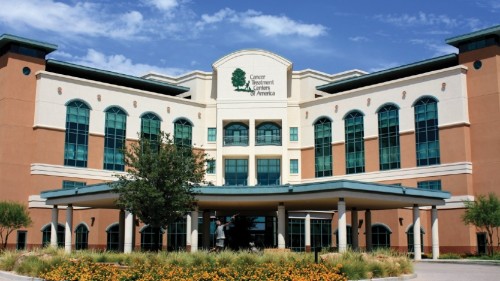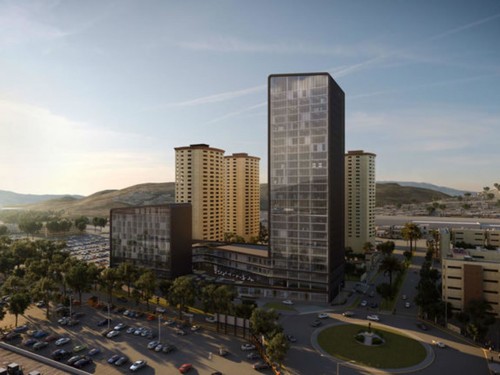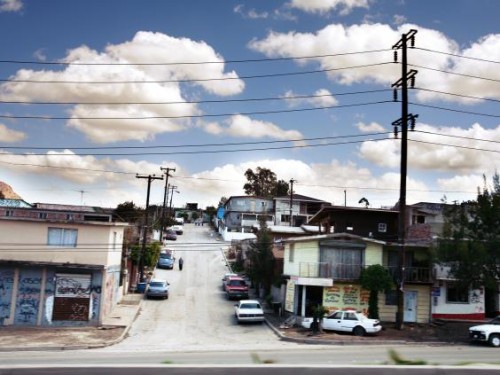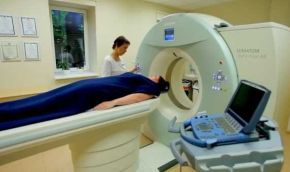
The Cancer Treatment Centers of America Western Regional Medical Center
We travel for business; we travel for pleasure. But more and more, many are traveling for health care. Leaving home for medical care, also known as domestic medical tourism, is becoming a more common practice for those who struggle to find care at home or who are looking for services or expertise outside of what their city – or even their state – may offer. With the level of quality cancer treatment facilities available in Phoenix, Arizona it is fast becoming a medical tourism destination.
Cancer Treatment Centers of America (CTCA), which has five hospitals around the country, including one in suburban Phoenix, is one such destination hospital. In fact, nearly 70-percent of CTCA patients leave their home state to treat in Arizona. Patients attribute their willingness to travel to a diverse class of physicians experienced in treating many forms of cancer, including complex and advanced-stage diseases. In addition to advanced technologies and tools oncologists deploy to fight cancer, CTCA also offers what it calls integrative services – ancillary offerings such as a naturopathic physician to help with treatment side effects, a nutritionist to keep patients healthy and strong during treatment, a mind-body therapist to talk through the emotional challenges of a diagnosis, a masseuse and acupuncturist to help with physical pain, pastoral care for patients to remain strong spiritually, and more. And all of these experts become part of a patient’s individual care team.
“From the very start, the services were superior to anything I’d experienced prior,” said Rosie Painter, a cancer patient who traveled from Colorado to Arizona for her treatment. “Someone was waiting for us at the airport, and everything was arranged for us. A schedule was left under the door to my room telling us each doctor I would be meeting with, there was even food provided in the refrigerator in the room. It was like checking into a hotel, but with exceptional medical care.”
Traveling for cancer care not only allows patients to visit the hospital when it’s most convenient for them, but it also provides the freedom to schedule follow-up appointments around their lifestyle because all of their medical needs are taken care of under one roof. No need to travel across town for therapy or a meeting with a dietician.
As patients start their three-to-five-day evaluation, they are met by a team of physicians and clinicians available to answer all of their questions and create a personalized care plan to meet their individual needs. This multidisciplinary team, which includes a medical oncologist, naturopathic physician, registered dietitian, mind-body therapist and pastoral care team member, works to provide the best medical choices possible, and they work with each patient to respect and deliver on the full breadth of treatment choices that he or she and their loved ones make.
As patients need additional expertise, tests or procedures, additional experts are brought onto their care team to ensure seamless communication focused on living a full and healthy life during and after treatment.
“Once I was aware of the help available at CTCA, I was ready to face the journey ahead of me. All of my fears and worries about traveling somewhere unfamiliar for treatment were dispelled, because what I found instead was a place where everything was organized for me,” said Rosie. “All of my doctors were in one place. Everything was where I needed it to be. As a dental hygienist, I know what it is like to genuinely care for patients, and that was what I felt at CTCA. There were people taking care of me who knew something about me, and who would be there to walk me through every step of the way, until I could walk by myself.”
There is no need to worry about making plane reservations, taking care of special travel needs or reserving transportation between the airport and the hospital. All of this is handled by the CTCA travel team serving as a personal travel agent to ensure each person arrives at the hospital safely and without stress.
Upon arrival at a CTCA facility, a patient’s Outpatient Accommodations team is ready to welcome guests and ensure that their stay is pleasant, comfortable and affordable. CTCA offers their own guest quarters at a reduced cost for patients who have limited mobility, and they partner with nearby hotels that deliver quality service and are available at a reduced rate. Patients and their caregiver may also take advantage of a number of amenities, including the concierge, salon services, fitness center, activities and classes, and special outings to local attractions and events.
Remaining healthy while undergoing treatment is critical, which is why the CTCA Culinary teams work to provide patients with high-quality food without sacrificing taste. Each hospital employs an executive chef, and at the Phoenix hospital, CTCA partners with an organic farmer, maintaining an on-site 69-acre certified organic farm with fresh produce picked, prepared and served in a matter of minutes. This level of freshness ensures that guests receive the most nutritious food possible.
“Because I was not able to have chemotherapy and radiation together, I had a six-week break from treatment where I was able to exercise, eat well, and let my body heal,” continued Rosie. “I had acupuncture, massage, and organic food prepared for me every day. It was really good care. I worked with a nutritionist and a naturopathic clinician throughout all of these treatments. I also saw a chiropractor and an acupuncturist at CTCA. These individuals helped ensure that my nutrition needs were met and that my immune system was as strong as possible.”
However, the challenge that many face when leaving their home for care is not always a medical one. Often patients are concerned about leaving their loved ones and their communities, which is why CTCA wraps its arms around its patients a standard it calls the Mother Standard of care. This patient-centered approach to cancer treatment combines a compassionate, nurturing environment with cutting-edge medicine to ensure that every person who walks through its doors receives the treatment that they would want for their own mother, father, brother, sister or loved one.
“The truth is, I was afraid to complete my care,” said Rosie. “I wasn’t sure how to step away from the warm, safe environment of CTCA and back into the routine of my life. And my support network at CTCA paid attention to this concern and reassured me. Many acquaintances have said to me that if they ever need medical care, they just want the best doctor, they don’t mind how compassionate he or she is. But I disagree. I think kindness and compassion are vital parts of the treatment and healing process. That individual is making decisions for me, so I want him or her to be compassionate and knowledgeable. That is what I found at CTCA, and this experience changed my understanding of quality care.”
source: http://www.komonews.com / Komo News.com / Home / Seattle, WA






